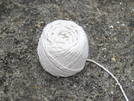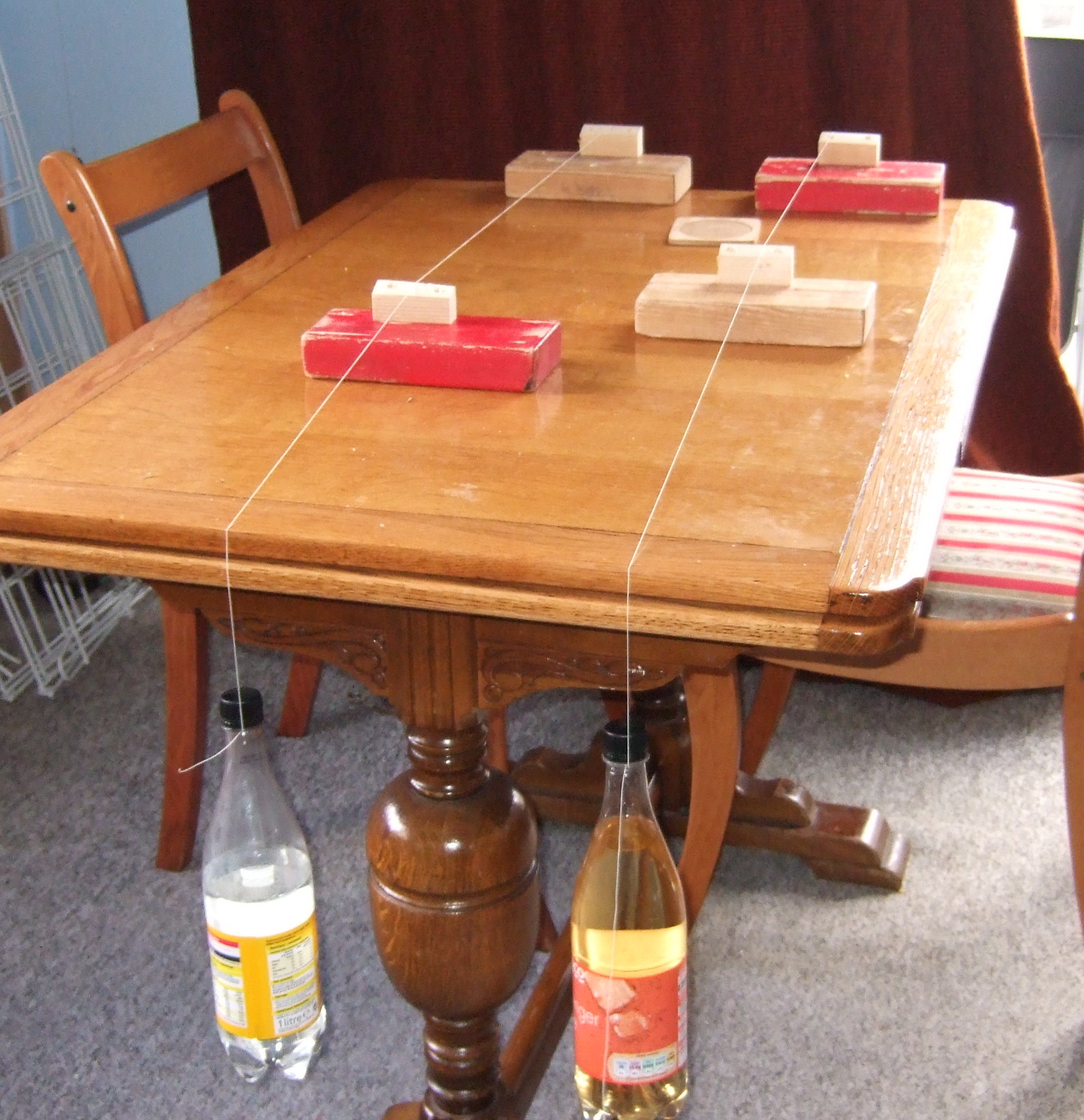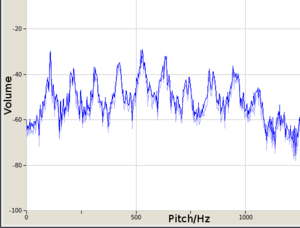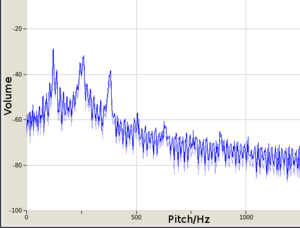Ingredients
 | String |  | Weights - I found lemonade bottles filled with water ideal. |
 | A table | some blocks of wood or other similar shaped solid objects to rest the strings over |
Instructions
 Cut two pieces of string slightly longer than the table. tie one end to the table and the other end around the neck of your bottle.
Cut two pieces of string slightly longer than the table. tie one end to the table and the other end around the neck of your bottle.
Put two blocks under each string.
Add some water to the bottle.
Try plucking the string.
Try changing the length and the weight in the bottle and see what effect this has on the sound it produces.
Set up a second string to have the same weight as the first. find out which lengths sound good together.
Result
You should find that making the string shorter, or the weight heavier should make the pitch higher.
If you get the weights the same in both bottles and you jiggle the string a bit to make the tension in both strings the same, you should find that the two strings sound nice together when one string is 1/2, 2/3, 3/4 as long as the other.
Explanation
.A stretched string vibrates because when it is pulled in one direction the tension on each part of the string is no longer pulling in opposite directions and cancelling itself out, some of the tension will act to straighten the string.
This means that the string accelerates until it straightens out. At which point it over shoots and starts to bend the other way. Eventually it starts to accelerate in the other direction. This process happens many tens or hundreds of times a second,
 |
| The tension acts to pull the string straight ag |
| The string accelerates until it is straight and is moving very quickly. |
 |
| The string overshoots, slows down and then starts to move in the opposite direction. |
| |
| Here is a cello string vibrating, slowed down by a factor of 40. |
There are various things you can do to the string to change the rate at which it vibrates:
 |
| Making the string thicker and more massive, means that the same force is moving more mass so it will accelerate more slowly. This means that it will take longer to do a vibration and so the pitch is lower |
| If you reduce the tension in the string then the restoring force will be less so the vibration will take longer and the pitch will be lower. |
| However if you make the string shorter, it will be more curved so the tension is pulling in a direction that will more effectively pull the string straight so it vibrates faster. If you halve the length the string will vibrate at twice the speed. |
How do some notes sound good together?
A string doesn't just vibrate in one simple way there are a whole set of different 'modes' of vibration. There is the fundamental node where the whole string moves in one direction and then the other which all the diagrams so far have shown.
Then there are a series of harmonics where the string vibrates in different ways:
| In the first harmonic the string vibrates forming an S shape, straightens out and then forms an inverted S shape. This is exactly as curved as a string half the length so the vibration is at twice the frequency. |
| |
| Video of the first harmonic on a cello string which is being bowed out of shot. |
| The second harmonic has two points which aren't moving and straightens out and inverts as the string vibrates. As the curvature is equivalent to a string a third as long the frequency is 3 times as high as the fundamental |
| |
| A cello string vibrating in its third harmonic. The size of the vibration is now very small as the string is effectively very short and stiff. |
.The harmonics are the reason why the same note can sound so different coming from a violin and an oboe. The fundamental frequency is the same but the amount of each of the harmonics is different. This is also how we tell the difference between different vowels, an 'Aaaah' sound may be at the same pitch as an 'Eeee' sound but their harmonics will be different.
 |  |
| Spectrum of Aaah sound showing lots of different harmonics | The Eeee sound has far fewer harmonics so sounds different. |
Back to the two notes again. Sounds which have harmonics of a similar pitch sound good together.
For example if you have a string whose fundamental is at 100Hz it will have harmonics at 200Hz, 300Hz, etc
This should sound good with any note whose harmonics overlap, so another string with a fundamental at 150Hz, it will have a first harmonic at 300Hz which is the same as the second harmonic of the other string.
If the two strings have the same tension the second string would be 2/3 as long as the first. In fact any integer fraction will sound quite good, especially the ones involving small numbers.
In fact if one string is 1/2 the length of the other so many of the harmonics of the long string will be a harmonic of the short string that they sound very similar and we call them the same note, just an octave apart.
.










Comments
Add a comment